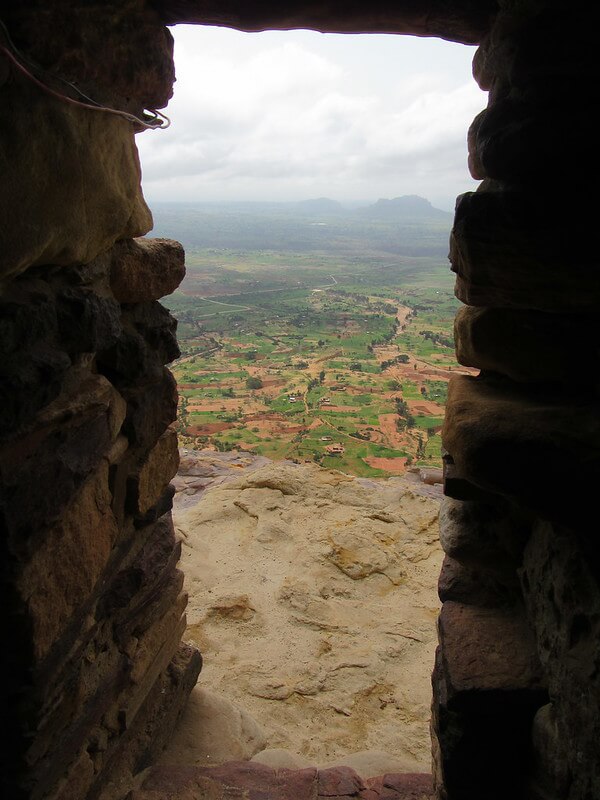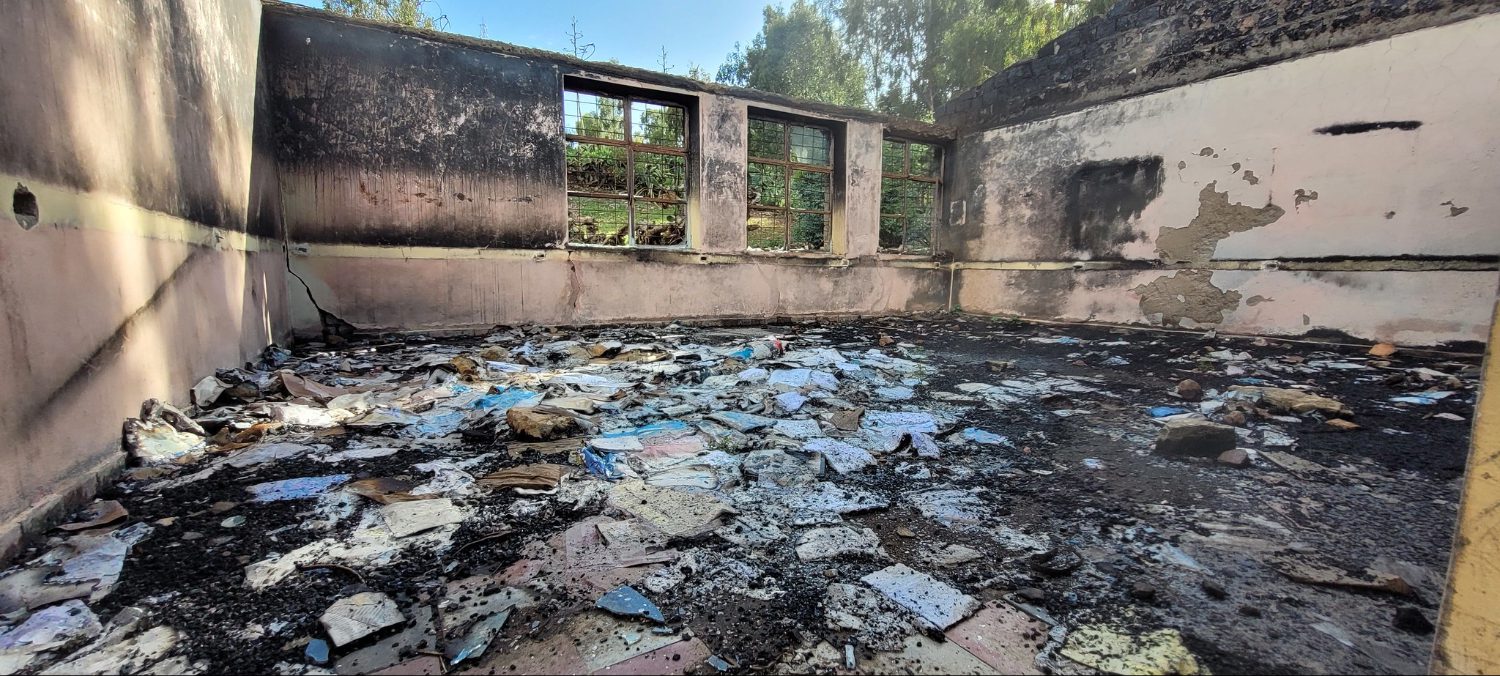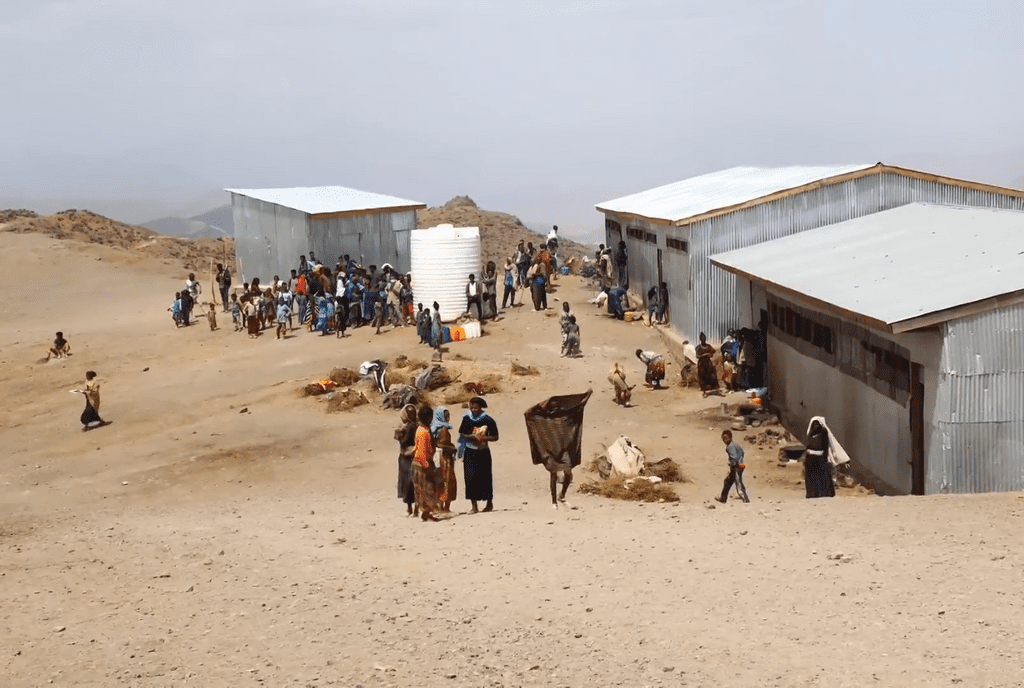Summary: the political dispute that led to war in Tigray, Ethiopia, was sparked by contending interpretations of the right to self-determination in the country’s constitution. A themed collection in the January 2021 issue of the journal Nations and Nationalism explores the diverse theories and practices of self-determination in the Horn of Africa, shedding light on this conflict and why it will be so difficult to resolve.
Ethiopians are fighting over self-determination. In the last few months, constitutional disputes over respective powers of the federal government and regional states have become full-scale civil war in Tigray and escalating conflicts in Oromiya, Beni Shangul-Gumuz and other regions over the right of self-determination. It’s hard to see how these disputes can be resolved, but at least we can begin to circumscribe the problem.
One of the most important, but least appreciated, arts of governing is the ability to handle radical disagreement and its fellow traveller: systemic uncertainty. In complex societies, it’s normal to find a lack of consensus over basic questions such as the identity of the nation and the nature of the state. These are not just disagreements but radical disagreements, when those who are arguing don’t even agree on what they are arguing about. Contrary to the assumptions of much political philosophy or political science, there’s no requirement for a singular consensus on how to govern – whether it’s called a social contract, political settlement, societal ordering, or something else. Polities can still function without them – in fact, they must. Christine Bell has coined the term ‘ungovernance’ and with Jan Pospisil ‘political unsettlement’, and I have outlined a typology of forms of political disorder.
This vocabulary isn’t familiar to Ethiopia’s political class. Too few of them appreciate the arts of managing the incommensurable. They too rarely acknowledge that indeterminacy, not certitude, is the normal state of political affairs. Since the 1970s, political disputes in Ethiopia have usually been resolved by force of arms, with force of argument organized in a similar manner: with each party insisting that only their view is correct, and that those who challenge them aren’t legitimate. This assumes that a core task of government is to eliminate disorder.
Like many other national crises around the world, Ethiopia’s conflicts revolve around politicized ethnicity, the constitutional order and models of governance. However, the Ethiopian case is unusual in that it also includes contests over self-determination – a right at once fundamental and elusive.
This month, the journal Nations and Nationalism publishes a themed collection on nationalism and self-determination in the Horn of Africa, co-edited by Sarah Nouwen and me. The papers were written three years ago; the timeline of academic journals means that the edition is published only now. Our starting point was a reflection on the collection of essays on this topic published almost 40 years ago, edited by the late I.M. Lewis. In those years, nationalists and revolutionaries pursued an array of different political projects, making real diverse forms of self-determination. The same is true today – and the circumstances and meanings have of course changed.
The Nations and Nationalism collection shows that the Horn has been a crucible for innovation on both topics with the countries of the region – Djibouti, Ethiopia, Eritrea, Somalia, South Sudan and Sudan – each having a different framing of what it means to be a nation and different theorizations of self-determination. Sarah Nouwen’s and my exploration of the legal norms and principles shows that the legal notion of self-determination is itself indeterminate – and necessarily so. No legal framing or constitutional order can define the people who are entitled to determine their own future, and any attempt to pin it down flirts with calamity. In our framing article, we write: ‘Indeterminate norms can be stronger than concrete ones. Once people insist on rights as defined by a particular rubric, it spells an end to negotiation—with one’s own constituency and with others.’
Mulugeta Gebrehiwot and Fesaha Gebresillasie contributed the paper on Ethiopia. Normally, I would have asked them to write a blog post, not least because the current wars in Ethiopia are partly about self-determination. However, as part of the silence imposed on what is probably the largest and most deadly armed conflict in the world today, they are out of contact.
Mulugeta and Fesaha analyze the ideological-theoretical and conjunctural political reasons for the ethnic-national components of the federal constitution of Ethiopia and the ways in which this was implemented over the years of the Ethiopian People’s Revolutionary Democratic Front (EPRDF) and subsequently challenged. They begin with its achievements:
‘The design of the 1995 Federal Constitution of Ethiopia was intended to facilitate the building of a common economic and political community based on the free will of the nations, nationalities, and peoples of Ethiopia. It is unique in Africa and had no parallels anywhere in the world at the time of its adoption. The practice in the succeeding two decades showed that, broadly speaking, Ethiopia underwent a transformation, remaking itself as a multinational state that respects the rights of cultural identities as opposed to its previous definition of a ‘prison of nations’. Ethiopia’s formerly marginalised cultural communities provided the impetus for a new form of unity based on recognition of rights to self-determination.’
Mulugeta and Feseha then identify three sets of problems with this arrangement. The first is a failure of theory. This starts with the oddly anachronistic vocabulary of ‘nations, nationalities and peoples’, redolent of the former Soviet Union. They write:
‘The problems with the normative framework emanated first from the Leninist-Stalinist theorisation of “nations, nationalities, and peoples”, which never surmounted the contradictions enshrined in Stalin’s original formulation. The concept that a nation is constituted by historical processes was never able to prevail over the essentialist notion of a nation as an expression of a primordial national character.’
We can unpack these two sentences. Stalin was tasked by Lenin with formulating a theory and policy for the issue of diversity in the Russian Empire, and he framed a conception of a nation based on ethno-linguistic homogeneity, common history and contiguous territory. But, as a good Marxist, he then noted that the nation was constituted by historical forces – with the implication that, as history moved on, so too would the nation be re-made. The problem was that any attempt to overcome the inequalities among national groups required constitutional and administrative arrangements that were designed around the groups as they existed at a particular historical moment, and therefore ran the risk of freezing their development and distorting the necessary socio-economic changes. In due course, a framing that was designed precisely not to fall into the trap of ethnic primordialism, generated exactly those kinds of ethnic sentiments. Much the same is true for Ethiopia: a system and a map drawn up in 1991 for an agrarian society of historically unequal groups needed a radical overhaul with accelerated economic growth alongside the growing consciousness among the formerly oppressed that they were indeed equal citizens. Mulugeta and Feseha use the term ‘administrative nationalism’ to describe the way in which the federal system generated ethno-territorial projects, instead of building a common economic and political Ethiopian community. They observe:
‘a trend towards an exclusionary understanding of identity and nationalism and in turn the essentialist or folklorist understanding of ethnic identities supplanted the Leninist-Stalinist theory of nations as entities constituted by history. These challenges not only impeded the Ethiopian project of social transformation but also fed into the growing tendency of the ruling elites to use nationalism as an instrument for constituency-building in their contest for state power, which in turn emboldened the development of exclusionist administrative nationalism.’
A second problem is that there were important ‘legislative and procedural gaps for the implementation of internal self-determination short of statehood.’ This was perhaps inevitable: the rationale for including self-determination in the constitution was precisely so that when there was a democratic failure at the center, a region was entitled to exercise its democratic rights on its own. The process for doing this was not specified in detail, and perhaps it could not be. The constitution possessed a crucial – perhaps fatal, probably inescapable – gap in specifying the authority for holding regional elections in the absence of authorization from the federal authorities. The administrative procedures for organizing elections obviously should be subordinate to the democratic self-determination norm, yet this was not spelled out – presumably because the EPRDF’s own democratic failings while it was in government were not supposed to be the spark for dissenting regional governments holding elections on their own.
Sarah Nouwen and I argue that the value of the norm of self-determination lies precisely in the difficulty of pinning it down. We write:
‘In some instances, parties have indeed kept the control over the interpretation of the text, but at a high cost. The idea of and attempt at control is a risk to self-determination in its democratic sense. If parties believe they can control the implementation of the text, how can the political space that self-determination is supposed to create be protected against usurpation by the most politically powerful actors? Self-determination becomes an instrument of those powerful actors, rather than a constraint on the exercise of political power.’
This was the EPRDF’s failing, and the one to which the Tigray People’s Liberation Front (TPLF) itself fell victim when it lost power at the center.
This issue emerged in the debates during 2020 over the postponement of national elections and the TPLF decision to go ahead nonetheless in Tigray: Marishet Mohammed Hamza has argued that both the federal and Tigray authorities were acting unconstitutionally. This is, without doubt, the most persuasive argument – partly because there are points of law and procedure on both sides, but more fundamentally because it points to the simple fact that a narrow legalistic interpretation of a contested constitution, that doesn’t command universal assent let along reverence, cannot be the basis for determining right and wrong in an existential debate on the future of a country.
What happened of course is that each denied the legitimacy of the other, with the implication that the outcome would be decided by force of arms.
The third problem was that the EPRDF remained a vanguard party in which the procedures of democratic centralism were taken to an extreme. The EPRDF’s decision-making was primarily in the hands of the TPLF, and the TPLF’s modus operandi was to hold a protracted internal debate – wholly inscrutable to outsiders – and then issue the ‘correct’ party line which was not up for debate. The norm of plural democracy was reduced to a bounded debate, conducted by a small political establishment behind closed doors, with the rest of the citizens reduced to the role of consumers not entitled to raise questions.
Mulugeta and Feseha describe and criticize the identikit constitutions and regulations of the regional states, adopted (or imposed) regardless of local circumstance and without regard to the need for open-ended consultation. In his prescient book, The Ethiopian State at the Crossroads, published in 1999, veteran Oromo leader Leenco Lata described how the TPLF’s manipulation of the federal system to become an instrument of central control was preventing the organized opposition of earlier years from exercising democratic rights.
Leenco was one of the principal drafters of the 1991 National Charter, which is the foundation point of the federal constitution. The norms and principles contained in those documents promised equal socio-cultural, economic and political rights. Much progress was achieved on the first and second, which made the failures on political rights and democracy all the more galling.
The original sin of the EPRDF—fatal to its democratic legitimacy in much of the country—was the formation of the Oromo People’s Democratic Organization (OPDO) as a rival to the Oromo Liberation Front (OLF). This was an example of how political certitude prevailed over democratic tolerance. It served the military and organizational needs of the TPLF’s expansion beyond its homeland but was rightly seen as a mechanism for proxy rule of Oromiya by Tigrayans. The OPDO was initially formed by Oromo prisoners of war captured by the EPRDF who accepted their captors’ program of revolutionary democracy. As Leenco notes,
‘Ironically, these same humiliated individuals are expected to serve as the symbols of their communities’ empowerment and sense of dignity. How can they? The end result is obvious. The communities to which these individuals are assigned by the TPLF have concluded that they are being treated as captives of former captives.’ (pp. 230-1)
Leenco foresaw that the outcome would be a new kind of disenchantment with politics:
‘An extreme form of individualism and particularism may come to completely replace the previously widespread tendencies to view the liberation of oneself and one’s community within the general agenda of human emancipation. Losing faith in a better tomorrow but unwilling to tolerate the ongoing injustice and humiliation, the present and future generations may be forced to adopt destruction as an end in itself.’ (p. 222)
In a curious way, the ultra-political leadership cadre of the TPLF gave birth to a depoliticized generation. Keeping the practices of democratic debate within their own citadel, the leadership mentored a new set of technocrats who had little experience of practicing real politics, let alone handling radical disagreements. The current prime minister and his predecessor are among them. Abiy Ahmed began his tenure as prime minister in 2018 responding to the echo chamber of reformism and then adapted to the script of grievance, anger and destruction.
One of the attractions of Abiy’s philosophy of Medemer (‘synergy’ or ‘coming together’) is precisely that it lacks the intellectual rigor characteristic of the TPLF leadership and their fellow revolutionaries. Medemer promotes and embraces ideas of synergy and togetherness that are open to different interpretations and creates space for creative compromise and ‘ungovernance’ in Christine Bell’s sense. It needs a skilled politician, able to conduct negotiations simultaneously on different levels and according to different political logics, to realize its potential. Unfortunately, Abiy hasn’t exhibited those skills: his trademark has been a combination of naivete, impatience and over-confidence. Moreover, in the hands of some of Abiy’s disciples Medemer has become a tool of excommunicating dissenters from the political community.
In this context, the concept of self-determination is highly flammable. It is already both fuel and spark to the Ethiopian conflict in Tigray and threatens to be so elsewhere in the country. Sarah Nouwen and I write about how it is most useful where it is most contested:
‘On its own, self-determination lacks content. Specified in relation to a political circumstance, it takes on meaning – a meaning as changeable and contestable as those political circumstances themselves.’
The implication is that neither the right of self-determination of groups, nor its exercise, can be decided by a legal ruling. The legitimacy of claims to self-determination come about through political processes, both dialogue and contestation. In a complex society, we hope that such radical disagreements can be managed through dialogue. The alternative, as Ethiopians are rediscovering, is war. One of the immediate casualties of the Ethiopian war in Tigray is Tigrayans’ attachment to a common sense of Ethiopian identity. All reports from Ethiopia show that the government’s rejection of Tigrayans is being reciprocated: Tigrayans no longer feel they are wanted in Ethiopia. The notion ‘Ethiopian’ is in grave danger of reverting to being identified solely with an Amhara identity and agenda. If the Tigrayans remove themselves from the Ethiopian conversation, others may follow.
It will take a leadership of immense civility, courage and skill to reopen the kind of dialogue necessary for Ethiopians to come together so as to hold their country together. Meanwhile, today’s wars are sharpening the logic of self-determination exercised by violent means. What began as a breakdown in dialogue is heading towards an existential national crisis.
“View of valley through door of Daniel Korkor Ethiopia Tigray” by amanderson2 is licensed under CC BY 2.0



